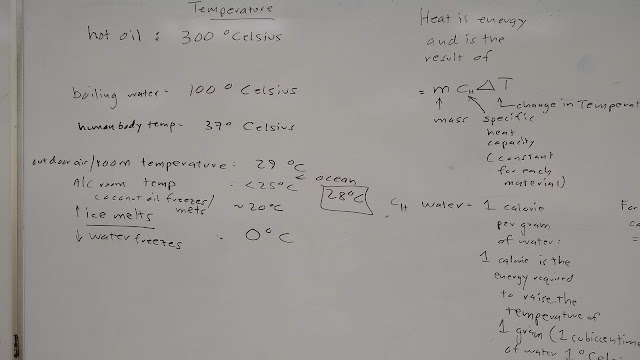Heat and temperature

A unit and heat, temperature, and the difference between heat and temperature began with an older video from 1980 that rather concisely and accurately covers the two concepts in a series of six videos. The videos also introduce terminology and vocabulary carefully, covering a number of topics. On Wednesday the freezer was broken for my demonstration of the Celsius temperature scale. I bought ice and vegetable oil at the store. Some of the ice was used to demonstrate zero degrees Celsius, the rest was used to chill a small beaker of vegetable oil. Another beaker of congealed cooled coconut oil was used to demonstrate the melting temperature of coconut oil. A third small beaker of oil was put on the hot plate, that would rapidly start smoking up around 300 degrees Celsius - which is when I discovered I lacked a hot pad to remove the small beaker. I also covered the mathematics underneath calculating heat capacity from a change in temperature. Sweetmarshya "Marcia&quo




